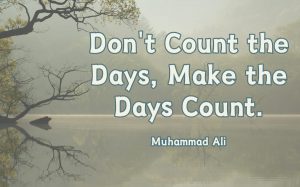《自律養生實踐家之旅321》 最佳狀態

我對養生的深刻領悟,來自幾個關鍵因素:首先是食物的生命力,其次是定期定額的養生態度,最後則是對「身體時間軸」的體悟。
當熟食成為生活的現實,我們就必須釐清身體與熟食之間的「權利與義務」。斷食的實踐讓我有機會深入體會身體對熟食的觀點,因此,當選擇進食熟食時,必須秉持一種對身體負責的原則,讓「時間軸」成為自我覺察的重要依據。
簡單來說,吃熟食就要有吃熟食的態度,而這樣的態度,正是斷食日常節奏的養成條件。
斷食的生活方式不僅奠基於食物的生命力,也仰賴定期定額為身體注入活力。我在真正領悟限時飲食的核心價值後,便在生活中全力落實。
年齡與基礎代謝率,是決定「定期定額」策略的浮動指標。年紀越長,越需要嚴謹自律;年紀越大,每天交付給身體的生命力,就越要講究與精準。
透過斷食的日常,每年都持續監測自己的身心狀態,隨著年齡增長,身心也穩定成長。與自己的對話中,「最佳狀態」成為每日自我檢視的總結。
身體狀態有人能夠明確感知,有人則難以察覺與評估。當與身體之間的「疏離感」隨時間消失,便能真切表達出自己的身體狀態是否良好。
疏離的根源,來自於囤積;囤積讓身體不再通暢,阻隔了我們對身體訊號的感知,也消磨了我們對健康的信心。
我們都有免疫力崩解的經驗,反覆感冒、蜂窩性組織炎、或帶狀皰疹突如其來,外表看似健康,內在則不堪一擊。
「非最佳狀態」幾乎成了多數人的常態。有些人自認處於亞健康,卻不知該從何開始整頓。
所謂「最佳狀態」,並非來自他人認定,也不是檢查報告的數據所能證明。所有數字正常的健康報告,也不必然代表身心處於巔峰,因為心理狀態與身體能量的真實水平無法透過報表顯現。
「最佳狀態」的核心,在於生活態度:是否體恤身體的辛勞?是否落實限時飲食?是否把睡眠視為日常作息中的重中之重?
最近整理教材時,「日常」這兩個字不斷浮現腦中。身體的時間軸概念,正是以「每日」為單位,我們該如何分配那不變的24小時?
當一日睡眠充足,那一天的機會便到來。我能以最佳狀態迎接那一天,專注的完成當日的工作,入夜時心滿意足的微笑入夢。
看似平凡無奇的每一天,我可以與不同的人對談,探索不同的主題,閱讀不同的書籍,每天的總結方向一致,每天的體會卻獨一無二。
我將「斷食的日常」轉化為「尊重身體的日常」,更進一步期許自己實踐「尊重生命的日常」。
細部拆解,「進入消化道的內容物」其實是決定健康關鍵的核心。以更平易的語言來說,就是一天中那段空腹的時光,不僅能讓我專注於工作,更是情緒轉化的關鍵時段。
需要澄清的是:空腹不是飢餓,沒有人喜歡飢餓,但每個人都能享受身體處於寧靜與平和的狀態。這是一種與身體之間的默契,更是向身體表達最高誠意的方式:無食物,無飢餓,前提是情緒平穩,全然專注於每一刻。
我有自己一套記錄靈感的方式,對於每日文字創作充滿期待。從無到有是我最熱愛的過程,字數從不設限,但一定要有產能。
「最佳狀態」是我每天夜裡的總結,也是對自己的期許:期許每天都有所進步,每天都能超越昨日的自己,每天都對生命發出最真誠的敬意與感謝。
而「最佳狀態」最精彩的片刻,往往出現在每週的回顧。沒有人能每天都保持在巔峰,但我們能做到的是:每週都能交出進階的表現。
(別數著日子過日子,要讓日子變得有意義。)
Optimal State
My profound understanding of health preservation stems from several key factors: first, the vitality of food; second, a disciplined and consistent attitude toward wellness; and finally, a deep awareness of the body’s internal timeline.
When cooked food becomes a practical reality of life, we must clarify the “rights and responsibilities” between our body and the food we consume. Through the practice of fasting, I’ve had the opportunity to experience my body’s perspective on cooked food at a deeper level. As a result, when choosing to eat cooked meals, I follow a principle of bodily responsibility—letting the “timeline” become a vital compass for self-awareness.
Put simply, eating cooked food requires a mindful attitude toward eating it. And such an attitude is shaped by the rhythm of a life built on fasting.
The fasting lifestyle is not only grounded in the vitality of food, but also relies on a scheduled and measured approach to energizing the body. After truly grasping the core value of time-restricted eating, I began to implement it fully in my daily life.
Age and basal metabolic rate are two dynamic indicators that guide the strategy of “regular and moderate” intake. The older we get, the more discipline we need. As we age, the energy we provide our body each day must be delivered with greater care and precision.
Through the daily practice of fasting, I continually monitor the state of my body and mind each year. As age progresses, so does the stability of both body and mind. In my daily conversations with myself, “optimal state” has become the closing reflection of each day.
Some people are able to clearly perceive their physical condition; others struggle to sense or evaluate it. When the feeling of disconnection from the body gradually fades, we become more capable of truly expressing how well our body is doing.
The root of this disconnection often lies in accumulation. Accumulation leads to internal stagnation, which dulls our sensitivity to bodily signals and slowly erodes our confidence in our own health.
We’ve all experienced a collapse of the immune system—repeated colds, cellulitis, or sudden outbreaks of shingles. On the outside, we may look healthy, but inside, we are defenseless.
For many, “sub-optimal” has become the norm. Some people may believe they are in a state of sub-health, but have no idea where or how to begin restoring balance.
The so-called “optimal state” is not determined by others, nor can it be confirmed by medical reports. Even a health report full of normal numbers does not necessarily mean one is in peak condition. Psychological well-being and true physical vitality cannot be reflected in charts or data.
The essence of an optimal state lies in one’s attitude toward life: Do you treat your body with compassion? Do you truly implement time-restricted eating? Do you treat sleep as the most sacred part of your daily routine?
Recently, while organizing my teaching materials, the word “daily” kept surfacing in my mind. The concept of the body’s timeline is structured in daily units. How, then, do we allocate our immutable 24 hours?
When we sleep well, the day ahead opens up its possibilities. I can meet the day in my best state, complete my work with focused energy, and fall asleep at night with a smile of contentment.
Though each day may seem ordinary, I have the privilege to converse with different people, explore different topics, and read different books. The direction of my reflections may be consistent, but each day’s insights remain uniquely mine.
I’ve turned the “daily fasting practice” into a “daily act of respecting the body,” and further, into a personal vow to live out a “daily respect for life.”
If we break it down, what enters the digestive tract is the central determinant of health. Put in simpler terms, the fasting window each day is not only my most focused work time, but also a critical period for emotional transformation.
Let me clarify: fasting is not the same as hunger. No one enjoys hunger, but everyone can appreciate the calm and clarity that come from a peaceful, nourished state of body. This is a kind of unspoken agreement with the body—perhaps even the most sincere expression of care: no food, no hunger, provided the emotions are steady and attention is fully rooted in the present moment.
I have my own method for capturing inspiration, and I look forward to my daily writing ritual. The act of creating something from nothing is my greatest passion. Word count is never the point—what matters is output with intention.
“Optimal state” is my nightly reflection, and my daily vow: to improve a little each day, to outgrow yesterday’s self, and to offer my deepest respect and gratitude to life itself, every single day.
And often, the most profound moments of that “optimal state” appear during my weekly reviews. No one can remain at their peak every day, but what we can do is this: deliver a more elevated version of ourselves, week after week.


